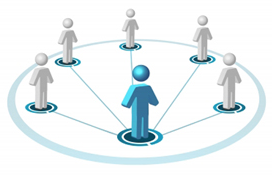It can be very difficult to establish a criteria for measuring and judging brand awareness and, therefore, judging the efficacy of a marketing campaign. Unlike other measurements, such as website traffic, organic searches, or conversion, awareness is a much more intangible measurement, difficult to quantify and evaluate in a meaningful and objective way. Nevertheless, it can be done. One important tool for doing this can be market research.
A recent and somewhat startling survey from Survey Monkey Audience determined that, though more than 80% of marketers in the U.S. agree that brand awareness is “extremely” or “very” important, about 70% of those surveyed also admitted that they did not know how much of their target market was aware of their brand, or even how to measure that value in the first place.
This represents a large problem: how to find out about your brand’s awareness levels, both prompted and unprompted, and relative to your competitors. SurveyMonkey, perhaps unsurprisingly, confidently asserted that surveys were the way to best determine brand awareness, and, indeed, they are the most common tactic. Without knowing your starting level of brand awareness, it’s essentially impossible to know if you’ve successfully increased it. So, the beginning part is to conduct a survey.
But market research can help with much more than just understanding how aware people are of your brand. With the right research questions, you can discover how best to communicate with your target market, what events to sponsor or attend, and even what tone to take.
Finding measurable goals
There are a few different ways to measure brand awareness. The first, and most difficult to achieve, is what’s called brand recall—the proportion of consumers who are able to recall your brand without choosing it from a list. These are the most truly aware consumers, since they actually know the name instead of just recognizing it. Both are valuable, but pure recall is the most important metric. It is measured by naming a product category—say, energy drinks—and then asking consumers to list all the brands they associate with this category.
The second is known as brand recognition, and this is the measurement of how well your logo or product image is recognized. Customers simply answer yes or no when shown a picture of your logo or product. This is less reliable than brand recall, since false positives exist, and by some indications may even be quite common.
The third and final mode of brand awareness is fairly new, and the least reliable of all. This measurement is made by simply tracking your brand’s mentions on social media. This is a tricky measurement, and there are many different ways to evaluate it: number of mentions, number of followers, or growth of either of those numbers to name a few.
Find your audience
 Market research can help you find out exactly the type of people most interested in your brand already. Those are the people that you need to be targeting, both to reinforce existing loyalties and grow new customers in the most fertile soil. For existing brands, this can sometimes lead to a harsh surprise—perhaps your research will reveal that a previously ignored demographic is your most loyal customer. This new information can be severely challenging to integrate, but as a marketer it is your job to be unsentimental and objective. If your research indicates you need a change in strategy, don’t be proud—change your strategy!
Market research can help you find out exactly the type of people most interested in your brand already. Those are the people that you need to be targeting, both to reinforce existing loyalties and grow new customers in the most fertile soil. For existing brands, this can sometimes lead to a harsh surprise—perhaps your research will reveal that a previously ignored demographic is your most loyal customer. This new information can be severely challenging to integrate, but as a marketer it is your job to be unsentimental and objective. If your research indicates you need a change in strategy, don’t be proud—change your strategy!
Once you’ve found your audience, it’s important to find out what motivates them and why they know about your brand in particular. This information can provide important insights to drive your activities and marketing efforts in the future.
Conduct audience-specific efforts
Each demographic is different, and each should ideally be communicated to in a way uniquely tailored to that demographic. A fictional sports drink struggling with brand awareness would likely find that its most engaged and aware demographic was athletes or people who are otherwise concerned with health and fitness. A natural brand awareness boosting strategy would be to sponsor athletic events, like marathons, around the United States. After successfully sponsoring several events, more people in the target demographic should be surveyed again so that efficacy of the efforts can be determined.
Market research is a vital part of any awareness strategy
Understanding your market is key to understanding your brand’s awareness. Brand awareness is only somewhat tangible: it’s hard to pin down and is essentially a moving target. Understanding your market is the only way to truly and reliably determine goals and move toward the creation of reliable business leads.
For more information on using market research within your organization, download our free eBook, How to Succeed Using Market Research, or take a look at our white paper, How to Use Market Research to Launch Your Business.
Editor's Note:
This post was written by Russel Cooke.
Russel Cooke is a business consultant and writer from Baltimore, Maryland. He graduated from the University of Louisville and worked in the Louisville area for over ten years before becoming an independent consultant and business writer. He recently relocated to Los Angeles, CA. You can follow Russel on Twitter @RusselCooke2.


